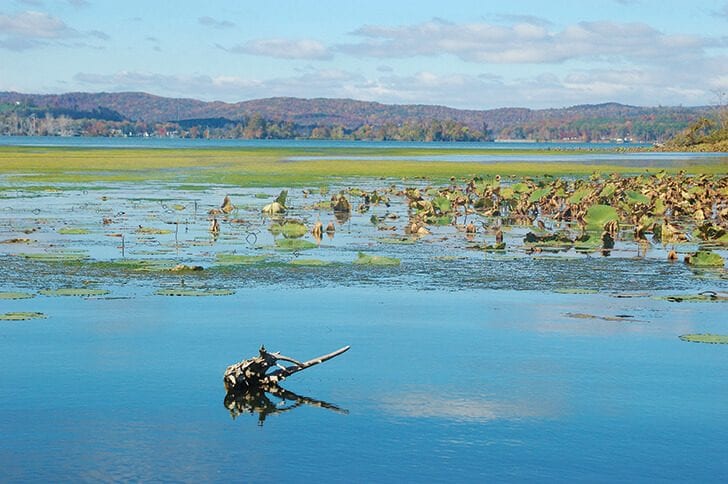If you’ve ever found yourself fishing for largemouths after a bitter cold front has blown into your area, then you might be familiar with how tough northern winds can make it to fill a livewell. All tournament anglers know these fronts wait until the night before the competition to crash the feeding-frenzy of the days prior to an event.
There is hope in this situation, and it doesn’t involve finesse presentations. It requires you to break out your heaviest sticks and braid (65 lb. minimum) as well as your stoutest hooks and beefiest weights. It’s time to present your bait where many fear to go… under the floating grass mats. I have an 11 pounder, two 10 pounders and probably over 100 in the 5- to 8-lb. range to my credit using this technique.
Mats of grass in the South consist of wide variety of aquatic vegetation. Where I fish most, they consist of hydrilla, a submergent grass that grows to the surface, and hyacinth, a floating vegetation. The hydrilla acts as a base that holds the hyacinth in place. This makes for a bass sanctuary similar to your home in that it has walls and a ceiling.
The trick to presenting your bait to these cold fish hiding under the mats is to crash it through their roof (the hyacinth) using a large tungsten steel weight. The exact size is dependent upon the thickness of the mat, but you want a weight that penetrates without too much effort. I usually opt for a 1 ¾-ounce, as the bass will be heading for the deepest recesses of the mat. This is also a place that many anglers fail to target because it can be quite a chore to penetrate and doubly difficult to extract a fish… especially a big fish. This is why we use heavy rods, lines and hooks.
The most popular baits to present to these fish are small craw or creature type baits. I find Gambler Chigger Craws or Burner Craws work great, but there’s no shortage of baits to choose from. Color is always a personal preference, but I’ve had the best results using hues of green like watermelon-red and green pumpkin for clear water and dark hues like black/blue or junebug for darker water.
As for the technique, simply put, you have to get the bait through the roof and into the bass’ house so he can eat it, but there are too many subtleties to discuss here. Once a bass bites, you have to get him out so again… NO WIMPY TACKLE!
If you’ve never punched mats, I suggest you go out with someone with experience. Commit to spending a lot of time punching the mats, and set out with a variety of weights, hooks and lures to experiment and fine tune your technique. And don’t forget the camera; most fish hauled out of these places are picture-worthy.
Capt. Randy Cnota is the publisher of the Panama City/Forgotten Coast edition of Coastal Angler Magazine.
